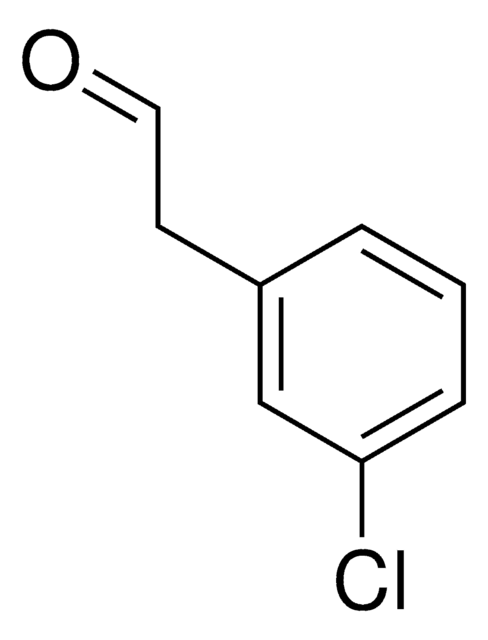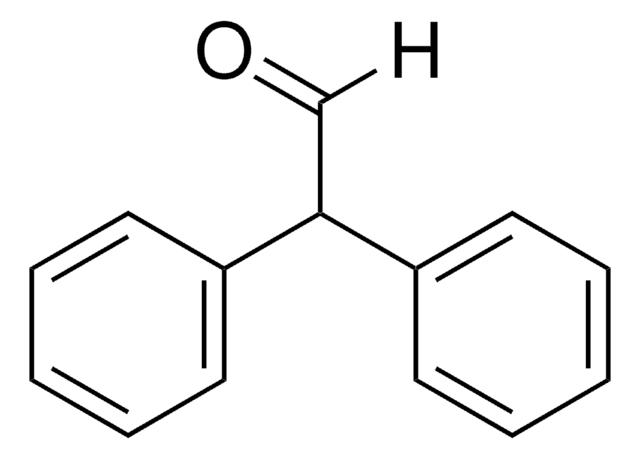W287407
Phenylacetaldehyde
≥95%, FCC, FG
Synonym(s):
2-Phenylacetaldehyde, α-Tolyaldehyde
About This Item
Recommended Products
biological source
synthetic
Quality Level
grade
FG
Halal
Kosher
Agency
meets purity specifications of JECFA
reg. compliance
EU Regulation 1334/2008 & 178/2002
FCC
FDA 21 CFR 172.515
description
may contain Citric acid
Assay
≥95%
refractive index
n20/D 1.535 (lit.)
bp
195 °C
mp
−10 °C (lit.)
density
1.035 g/mL at 25 °C
application(s)
flavors and fragrances
Documentation
see Safety & Documentation for available documents
food allergen
no known allergens
Organoleptic
chocolate; green; honey; hyacinth
storage temp.
2-8°C
SMILES string
O=CCc1ccccc1
InChI
1S/C8H8O/c9-7-6-8-4-2-1-3-5-8/h1-5,7H,6H2
InChI key
DTUQWGWMVIHBKE-UHFFFAOYSA-N
Looking for similar products? Visit Product Comparison Guide
General description
Biochem/physiol Actions
Other Notes
Signal Word
Danger
Hazard Statements
Precautionary Statements
Hazard Classifications
Acute Tox. 4 Oral - Aquatic Chronic 3 - Eye Dam. 1 - Skin Corr. 1B - Skin Sens. 1A
Storage Class Code
8A - Combustible corrosive hazardous materials
WGK
WGK 1
Flash Point(F)
154.4 °F - (External MSDS)
Flash Point(C)
68 °C - (External MSDS)
Personal Protective Equipment
Certificates of Analysis (COA)
Search for Certificates of Analysis (COA) by entering the products Lot/Batch Number. Lot and Batch Numbers can be found on a product’s label following the words ‘Lot’ or ‘Batch’.
Already Own This Product?
Find documentation for the products that you have recently purchased in the Document Library.
Customers Also Viewed
Protocols
Our team of scientists has experience in all areas of research including Life Science, Material Science, Chemical Synthesis, Chromatography, Analytical and many others.
Contact Technical Service














